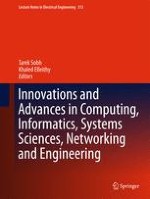2015 | OriginalPaper | Buchkapitel
An Energy Efficient Self-healing Mechanism for Long Life Wireless Sensor Networks
verfasst von : Dame Diongue, Ousmane Thiare
Erschienen in: Innovations and Advances in Computing, Informatics, Systems Sciences, Networking and Engineering
Aktivieren Sie unsere intelligente Suche, um passende Fachinhalte oder Patente zu finden.
Wählen Sie Textabschnitte aus um mit Künstlicher Intelligenz passenden Patente zu finden. powered by
Markieren Sie Textabschnitte, um KI-gestützt weitere passende Inhalte zu finden. powered by
